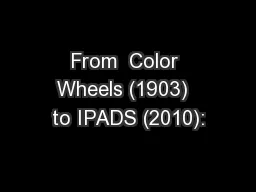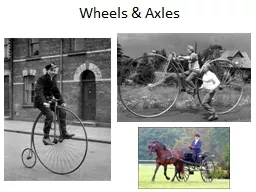PPT-From Color Wheels (1903) to IPADS (2010):
Author : tatiana-dople | Published Date : 2018-10-21
The Impact of Technology on Psychological Research Charles Burdsal Wichita State University Psychologists have long been enamored with equipment This is an interesting
Presentation Embed Code
Download Presentation
Download Presentation The PPT/PDF document "From Color Wheels (1903) to IPADS (201..." is the property of its rightful owner. Permission is granted to download and print the materials on this website for personal, non-commercial use only, and to display it on your personal computer provided you do not modify the materials and that you retain all copyright notices contained in the materials. By downloading content from our website, you accept the terms of this agreement.
From Color Wheels (1903) to IPADS (2010):: Transcript
Download Rules Of Document
"From Color Wheels (1903) to IPADS (2010):"The content belongs to its owner. You may download and print it for personal use, without modification, and keep all copyright notices. By downloading, you agree to these terms.
Related Documents














